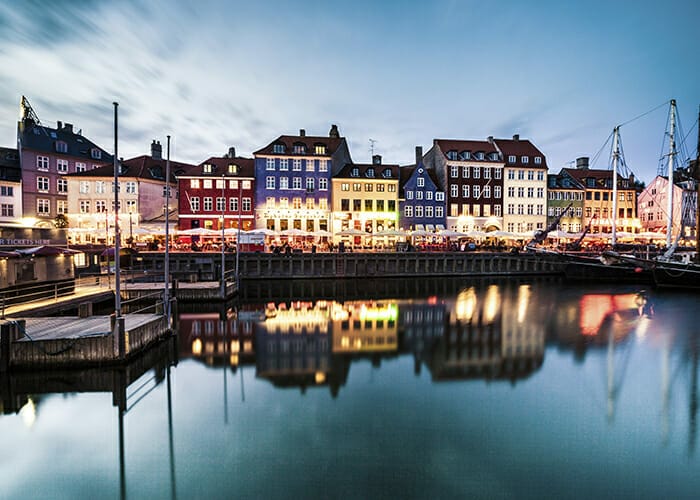Denmark’s DKK162 billion ($26.9 billion) Industriens Pension has just pocketed lucrative returns after selling off a range of renewable investments in Asia.
Between 2012 and 2015, Industriens invested about DKK600 million ($99 million) in various solar and wind assets in emerging Asian markets and Japan with specialist infrastructure fund managers Equis Funds Group and Actis. Now the pension fund has just sold out, for DKK1.2 billion ($200 million), to infrastructure fund manager Global Infrastructure Partners, making a 100 per cent return. The assets sat in a renewables allocation within Industriens DKK17 billion ($2.8 billion) allocation to infrastructure, part of an alternatives portfolio that accounts for a quarter of assets under management.
There are two seams to Industriens’ infrastructure strategy explains Jan Østergaard, Industriens’ head of unlisted investments, speaking from the fund’s Copenhagen offices. In its core program, Industriens invests directly in low-risk, long-term, buy and hold, often subsidised assets. Examples include its stake in the North Sea wind farm Butendiek and its DKK1.1 billion ($100 million) investment in UK utility Southern Water. For riskier investments, outside Organisation for Economic Co-operation and Development countries, Industriens seeks co-investments with funds allowing it to access investments at the early development and construction stage, something it doesn’t have the in-house capability to do.
“Construction and development is where you get the strong returns, but we would never be able to do this ourselves,” says Østergaard, who leads a 12-person alternatives team. The non-core portfolio comprises assets the fund develops and sells when they reach their core value.
It was this co-investment strategy, and the ability it gives the pension fund to benefit from construction and development risk, that led to the latest bumper returns says Østergaard, who draws on Industriens’ investments in Japan’s renewable sector to show the strategy in action. The Japanese Government changed its energy policy in the wake of the 2011 Fukushima nuclear disaster, pledging to double its renewable energy production by 2030. Spotting opportunity in this transition, Industriens was an early investor in Equis’s Asia Fund 1, which committed capital to eight infrastructure projects across the region between 2011 and 2014, one of which was Japan Solar, an operator of Japanese solar projects. Keen to take on more, Industriens made an additional DKK325 million ($53 million) co-investment alongside Equis in Japan Solar in 2013.
Now Østergaard says the fund will follow this success by pushing the strategy into other emerging markets. Latin America and Africa, where Actis has long track records of investment, are markets he highlights. He also says that, despite the risks, renewable investment in emerging markets can be easier than in developed markets. In emerging markets, renewable or new energy sources often start “from scratch” and do not need to integrate legacy infrastructure.
“It is nice to be part of the transformation to renewables from fossil fuels,” Østergaard says.
Infrastructure investment is also a good way to navigate the risks of emerging markets, he says. Such assets’ returns are based on demand for a service, are not subject to economic cycles, and usually involve working alongside stable, state-run utilities. About 30 per cent of Industriens infrastructure assets are now in emerging markets.
In contrast, less than 10 per cent of the pension fund’s private equity portfolio is in emerging markets, an allocation that won’t get any bigger, despite Industriens continuing private equity commitments to match its continuously growing AUM.
“Private equity in emerging markets involves all the usual business risks that come with a private company, plus emerging market risk and currency risk,” Østergaard explains. Industriens, which has a 9.7 per cent allocation to private equity, has been investing in the asset for about 20 years.
In the liquid portfolio, Industriens has a 43 per cent allocation to fixed income, comprising nominal bonds, emerging-market bonds, high-yield and investment-grade bonds. Danish and foreign equities account for 6.7 per cent and 21.4 per cent of AUM, respectively.
The latest returns in renewables follow on from consistently robust returns across the whole portfolio. The pension fund, which was established in 1992 and covers employees in Denmark’s industrial sectors, reported an 8.2 per cent return on its total investment portfolio for 2017 in preliminary financial results for the year; average returns over the last 10 years come in at 8.4 per cent. Investment assets are split into two sub-portfolios, with high and low risk. Members up to the age of 45 have their entire savings placed in the high-risk portfolio, after which the percentage is reduced gradually as they get older.
Industriens’ internal team manages the allocation to Danish and foreign government and mortgage bonds and Danish and European listed equities, along with overseeing manager selection across international equities, bonds and alternatives; the fund has about 25 manager relationships. An internal team also works on tactical asset allocation.



